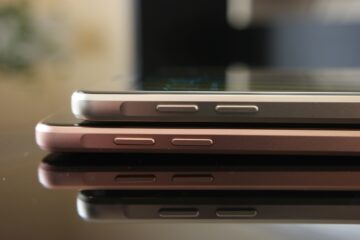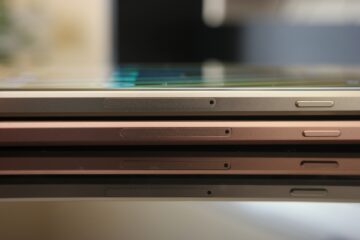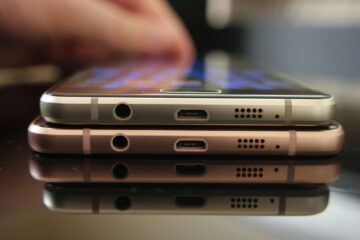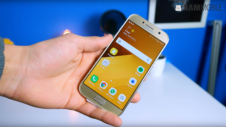Not so long ago, Samsung's flagship smartphones were the only devices you could get if you wanted a great experience, and the lower tier devices had many limitations that made them hard to recommend. But the Galaxy A series was the company's first attempt to offer a premium experience in the mid-range category, and the 2016 iteration of the Galaxy A takes things up a couple of notches by introducing rather high-end specs and the same metal and glass design as Samsung's Galaxy S and Galaxy Note flagships.
We have all four devices – the Galaxy A3 (2016), Galaxy A5 (2016), Galaxy A7 (2016) and Galaxy A9 (2016) – in our possession; we will be reviewing all four phones in the near future, but while we're working on the reviews, here is a quick preview of the Galaxy A7 and Galaxy A9 (2016), which we managed to get our hands on in a trip to China. A preview of the Galaxy A3 and Galaxy A5 is incoming too, so stay tuned for that as well!
The Galaxy A7 and Galaxy A9 are large, with the latter the biggest yet in the series with a 6-inch display. These phones have the same glass and metal build as the Galaxy S6 lineup and the Galaxy Note 5, and for most intents and purposes, look and feel the same as the S6 lineup. That is to say the design is pretty much perfect – it feels extremely premium, and while the glass makes the phones slippery, the overall design is something that gets high marks.
These devices have Super AMOLED displays, so the viewing experience is great. Software performance is great as well, and the software theme Samsung is using for the Chinese market is rather nice, especially thanks to the good-looking homescreen icons (the icons are flat and look immensely better than the tacky icons Samsung is using on other devices, including all of 2015's flagships.)
Imaging is something neither the Galaxy A7 nor the Galaxy A9 score high points in. Both phones have 13-megapixel cameras with optical image stabilization and f/1.9 aperture, but the performance isn't that nice based on preliminary testing. It reminds us of the Galaxy A8, which had good camera specs on paper but failed to take good pictures thanks to poor software processing. Samsung is probably limiting camera performance on these devices to make their flagship cameras stand out, or just not doing enough optimization to keep costs down.
The new Galaxy A devices are heavy as well, but we don't mind that at all thanks to the large batteries Samsung has managed to fit in. We haven't tested the Galaxy A7 or Galaxy A9 2016 enough to give conclusive battery life numbers, but the 3,300 and 4,000 mAh batteries should be able to last an entire day for most users.
The 2016 Galaxy A lineup was made available in China first, and considering the market's affinity for large-screen smartphones, the Galaxy A7 (2016) and Galaxy A9 (2016) could do well in the country, and in other markets as well. The Galaxy A8 took our recommendation for the best mid-range smartphone from Samsung, and from what we have seen on the new A7 and A8 so far, the A8 might not be able to keep that crown for much longer.
Stay tuned for our full review in the coming weeks (and a preview of the Galaxy A7 and Galaxy A9 (2016) as well), and do let us know what you think of the Galaxy A7 (2016) and Galaxy A9 (2016) down in the comments!













